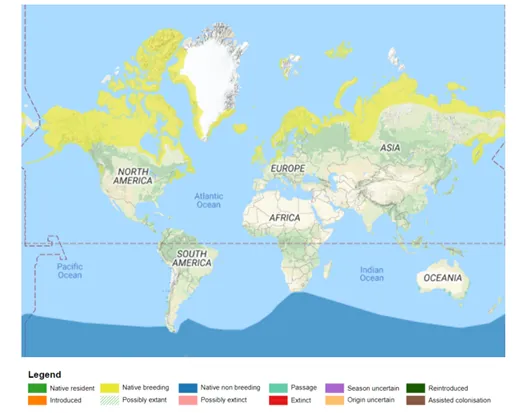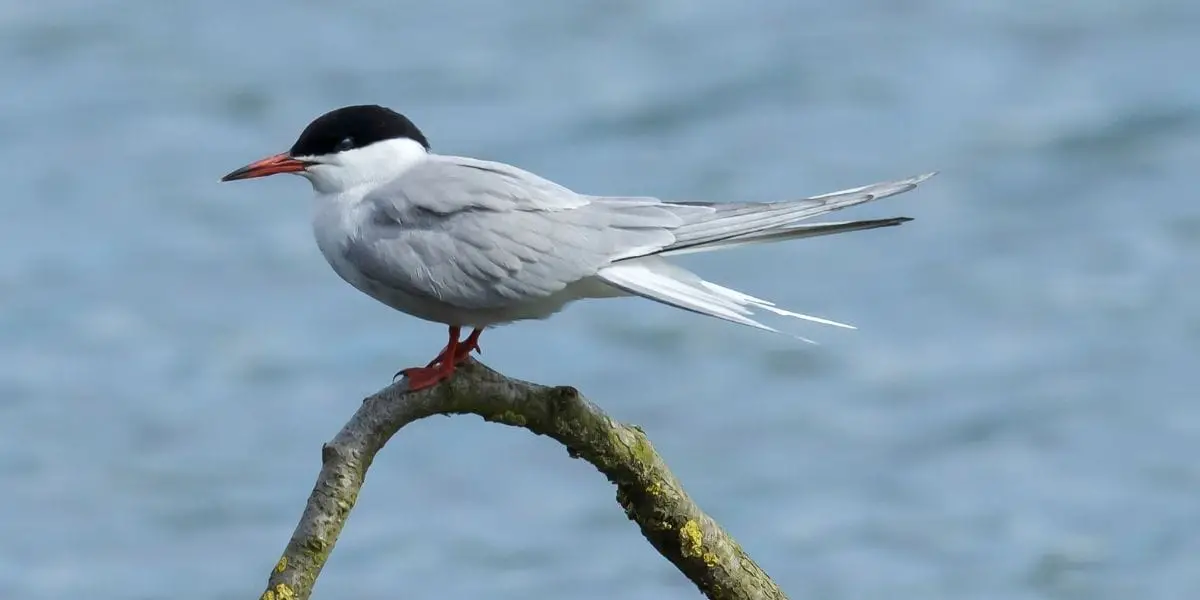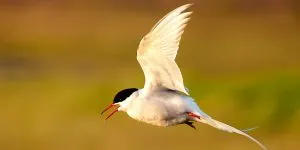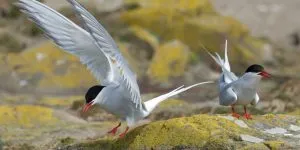Arctic terns are fascinating birds that are famous for their annual migration across the globe. With so much focus on the journeys undertaken by the arctic terns, what about the destinations? Where do arctic terns live?
The arctic terns live in both the northern and southern polar regions of the globe depending on the time of year. In the northern summer, they inhabit regions such as Iceland and northern Canada. In the southern summer, they inhabit the northern edge of the Antarctic ice. This way of living allows them access to the most daylight of any bird species on the planet
Keep reading to find out where the largest breeding population of arctic terns live or see our interesting facts about arctic terns to discover more fun facts.
Map of Where Arctic Terns Live
The following map of the world gives an overview of the breeding and non-breeding sites of the arctic tern.
Where Do Arctic Terns Live?
Arctic terns are a highly migratory species and therefore inhabit a vast geographical range that encompasses the globe. They live in both the northern and southern polar regions of the globe, flying between the 2 each year.
Where arctic terns decide to live is based on a variety of factors such as…
- Food resources: whether a region allows access to a vast supply of small fish such as cod and herring, and insects plays a huge role.
- Predation: arctic terns favour areas where predation is low to allow their populations to thrive.
- Climate: arctic terns go to great lengths to ensure they inhabit regions in a temperate, summer climate. The avoidance of harsh winters prevents high mortality within populations of the species.
Some areas that ‘fit the bill’ include northern polar regions such as Iceland and Alaska. Alaska is host to the largest population of arctic terns in one area. In these areas, the arctic terns can enjoy plentiful food resources such as cod and a relatively low rate of predation due to their isolation. However, in terms of climate, these regions are only temperate during the summer months of the year.
To combat the harsh northern winters, the arctic terns migrate south for a more temperate southern summer. Here, they live in vast numbers on the northern edge of Antarctica.
Whilst living on the Antarctic ice the arctic terns will undergo molting. This is a period of shedding their feathers to make room for fresh, stronger feathers. During this period, the birds will not be able to fly very well. Therefore, Antarctica is a suitable environment for this due to lack of predation, rich food supply close by, and a mild climate1 (source: National Wildlife Federation).
Where do Arctic Terns Nest and Breed?
The arctic terns will only nest and breed in the northern hemisphere of the globe during the summer months (May-July) Inuit knowledge of Arctic Terns (Sterna paradisaea) and perspectives on the declining abundance in southeastern Hudson Bay, Canada2 (source: D.A. Henri, et al., Plos One, Vol. 15, No. 11, 2020).
The most notable breeding populations include:
- USA (Alaska)
- Iceland
- Great Britain, Isle of Man and Channel Isles
- Finland
- Greenland
- Russia
- Norway
- Sweden
- Eastern Canada
- Denmark
Source: Joint Nature Conservation Committee, 2011
The specific nesting sites favored by arctic terns are coastal areas such as sand and shingle beaches where predation is low. They prefer to be close to bodies of water such as the sea or large lakes due to the plentiful supply of small fish.
In these coastal regions, the species will make nests on flat ground in grassy areas or on flat rocks. The arctic terns make these nests by scraping the ground to create a small depression where they can mate and lay their eggs3 (source: Scottish Wildlife Trust).
Arctic terns are extremely protective of their nests. They adopt an aggressive approach when it comes to protecting their eggs or fledglings. They have been known to make loud screeching noises and ‘dive-bomb’ humans or large predators with their sharp beaks to deter intrusion4 (source: Alaska Department of Fish and Game).
Where Do Arctic Terns Migrate To?
Arctic terns annually migrate from the northern polar regions to the southern polar regions of the Earth and back.
After breeding in the Arctic, they fly over the Atlantic Ocean along the coast of Europe. As they approach the equator, they diverge. Eastern terns fly along the coast of Africa whilst the western terns fly along the coast of South America. They then land on the Antarctic coast.
This journey across the globe amounts to a total of 45,000-60,000 km (28,000-37,000 miles) flown each year. As the species can live up to 29 years, they are very capable of covering the distance between the earth and the moon 3 times in their lifetime5 (source: T. Alerstam, et al, Ecology & Evolution, Vol. 9, Issue 17, 2019).
They do this for access to more abundant prey resources, suitable breeding grounds, areas to molt, and to escape harsh winters.
Whilst in Antarctica, the arctic terns diet is almost exclusively fish as it is more abundant, whereas their diet in the Arctic is varied including fish, crustaceans, insects, mollusks, and berries.
The arctic terns can embark on this vast journey due to their large wing span and relatively low overall body weight. Arctic terns weigh just 90-120g (3.2-4.2oz) making them one of the smallest members of the Tern family. This allows them to easily glide so they can fly for up to 6,000 miles without stopping6 (source: C.P. F. Redfern and R.M. Bevan, International Journal of Avian Science, Vol 162, Issue 2, 2020).
Related Questions
Do Arctic Terns Live in the UK?
Yes, there have been notable populations of arctic terns observed in the UK. Large populations live in Orkney in Scotland and Northumberland in England during the summer months. Overall, a maximum of 52,000 breeding pairs have been noted in Great Britain, the Isle of Man, and the Channel Isles7 (source: Joint Nature Conservation Committee, 2011).
Do Arctic Terns Live in Alaska?
Yes, there have been between 300,000-900,000 breeding pairs of arctic terns observed in Alaska during the northern summer months. This is a huge number that surpasses any other region in the world for breeding pairs8 (source: Joint Nature Conservation Committee, 2011).
Are Arctic Terns Endangered?
No, arctic terns are not endangered, they are classified as ‘Least Concern’ by the ICUN Red List.






